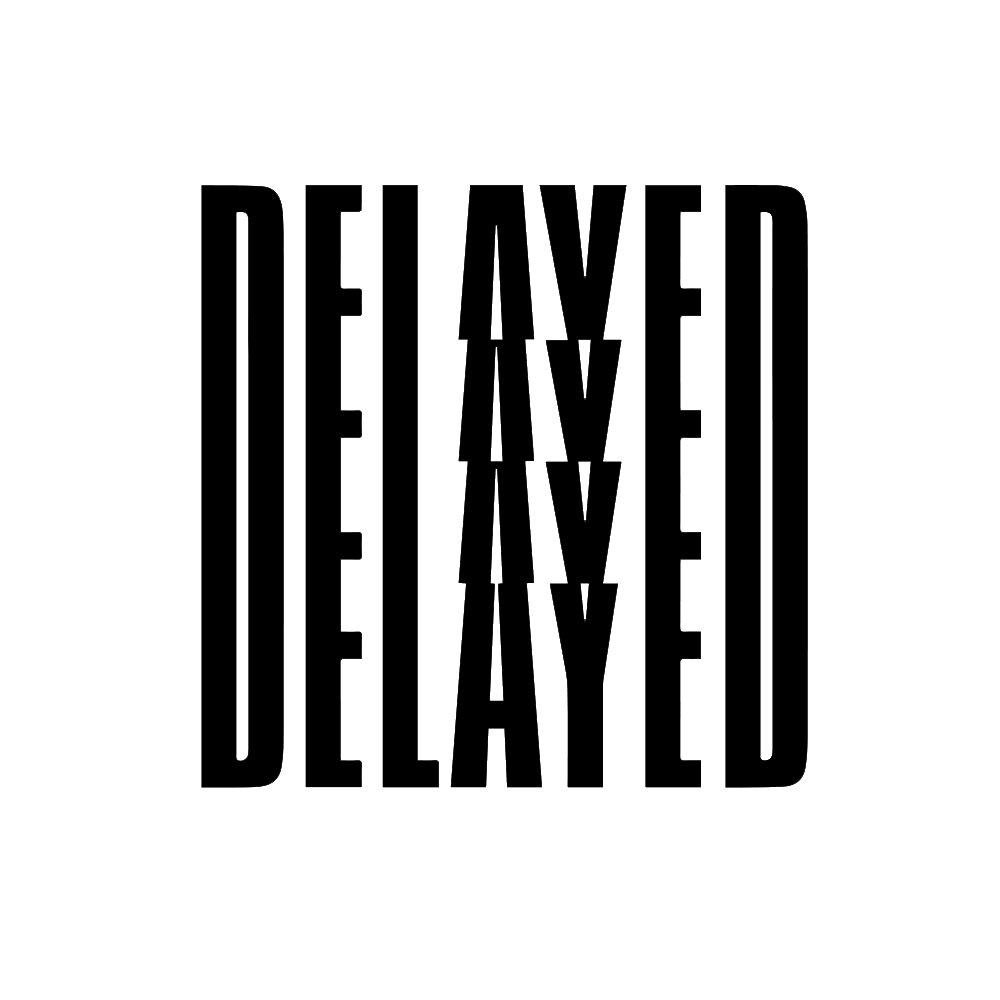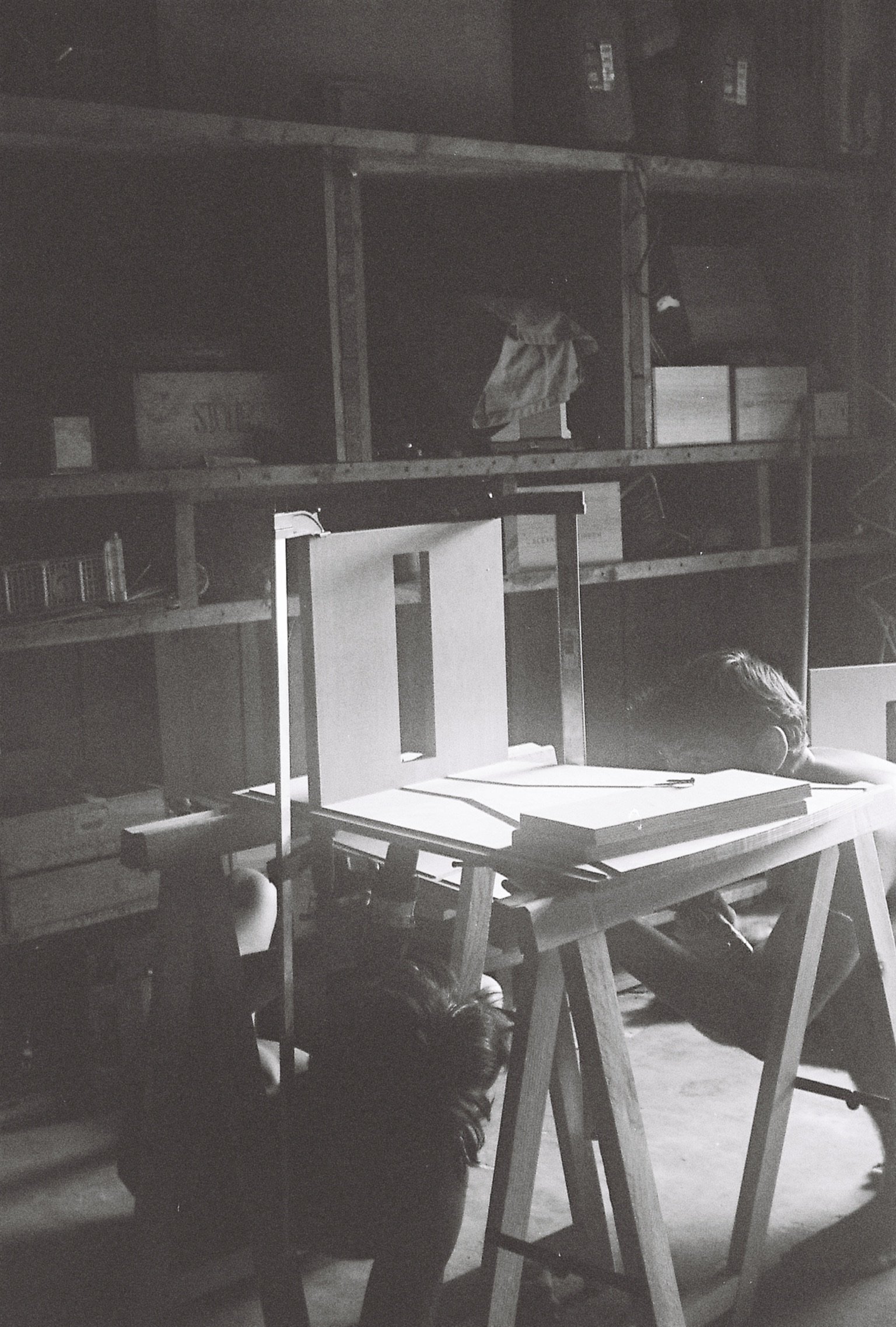Interview with klape nunsen
We at Team Delayed are excited to share an in-depth conversation that we had back in February with our friends Javier Salazar - the duo behind label, event series, podcast & custom traveling soundsystem klape nunsen. We have fond memories of sharing the sandy dancefloor at the Outro Lado stage at Waking Life with Leopold & Simon this past summer after a serendipitous run in during one of the first nights of the festival. A friendship that began on the dancefloor is a special kind of friendship - there is nothing better than connecting over a shared love for this music we all hold so dearly in our hearts.
Leo & Simon are artists based in Bordeaux in southwestern France, a city of 250,000 people known globally for its grapes but less so for the deep, crisp, shimmery dub that these friends have connected over. They embody a quiet humility & a devotion to their art which is something we greatly admire.
You may recall an event we wrote about this past fall that Leo & Simon put together - Dialog & Benji live in Bordeaux featuring their custom sound system & Dialog + Benji (the dub project from Dutch producer Samuel van Dijk [VC118A / Multicast Dynamics], Finnish producer Rasmus Hedland & Jamaican vocalist Daveron Dawkins). It was a night we were drooling over, wishing we could drop whatever we were doing, pack up & fly over to experience that soundsystem firsthand in an 18th century venue. Since then they’ve thrown two more events & have plans to bring the klape nunsen concept to some other countries across Europe in the future. They’ve also just announced new music on their label, Infinite Vault - 4 tracks made by Javier Marimon in Saigon back in 2018. We highly recommend you put on their set in the paragraph above as we dive in on the makings of their custom sound system, their recent rebrand from RDG Tribe to klape nunsen & the origins behind their project.
Can you tell us a bit about how you guys first met & how you started working together as Javier Salazar?
We met more than seven years ago through mutual friends. We both had a strong desire to create and produce music for the sheer pleasure of it, while also having a desire to evolve within the scene.
One of us had some experience in music production, while the other had always dreamed of building a radio platform, with a deep musical culture shaped by family and surroundings. This passion for exploring music’s history and the evolution of different styles over time allowed us to complement each other naturally.
Without even realizing it at first, this synergy gave birth to Javier Salazar—an entity that represents both of us as one.
After diving into production, the urge to play and share our music in front of an audience quickly followed. The dream started materializing as we discovered intimate festivals and ever-deeper sonic experiences.
Then, just as we were beginning to organize our first events, the pandemic hit. The day after lockdown was announced, we decided to create a label and keep pushing forward with music production. In a way, an event that got canceled due to the pandemic became the trigger for this next step.
Since then, the project has only become more professional, evolving alongside us as we grow and as we continue to meet inspiring people within this scene.
What does klape nunsen mean & what does this new name mean for the future of the platform you’ve created?
It comes from a desire for coherence—a connection between all elements: the music, the visual aesthetic, and the layers intertwining within the project. We needed a name that better aligned with what we wanted to represent, something that had been simmering in our minds for a year and a half before fully taking shape.
"Klape" evokes the sound of percussion and its rhythmic cadence. "Nunsen" merges noon—the moment when the sun reaches its peak in the sky—with sun, as a nod to our love for listening to music outdoors, during the daytime, when our sound resonates best.
As for the future, the goal is to refine everything even further, while still leaving space for individual interpretation and experience.
I really love the connection of the word ‘Nunsen’ in the project’s name to daytime and outdoor events—it’s beautifully poetic and a nod to the origins of dub soundsystem culture. This also explains a lot about the sound associated with your projects—deep, floaty, rhythmic, dubby sounds. What artists and labels have inspired you the most over the years, both in the studio and as event curators?
Our biggest inspirations come from artists who emerged and evolved in the ‘90s and early 2000s. The sound of that era had a rawness, relief, and depth that really speaks to us.
To name a few clear influences: Moritz von Oswald with Rhythm & Sound, Jan Jelinek and Vladislav Delay, as well as the early works of Monolake. The minimal and IDM scenes are features of this period that we greatly appreciate.
We are completely fascinated by this custom sound system you guys built. Why did you decide to build it? Was there a specific musical experience in your lives that inspired the desire to build it yourself, or was it more of a gradual process over time?
It was something that had been in the back of our minds for quite some time. At first, it was more of an abstract idea, but over time, we became increasingly drawn to soundsystem culture.
Having listened to a lot of roots, dub, and reggae over the years, we were always fascinated by the soundsystem as a boundary object, the intersection of multiple realms: creative, social and the more technical side. The influence of dub soundsystem culture played a significant role in shaping this approach.
Experiencing La Vallée Electrique Festival some years ago has been a real turning point for us. Listening to techno on a homemade soundsystem made us realize how powerful and immersive a DIY setup could be, completely changing our perspective on sound. Partnering with Melifera and working closely with them on La Vallée Électrique Festival strengthened our belief in organizing more niche events—and in creating a soundsystem that was truly our own.
As always, it was about maintaining coherence. The deep music we curate deserves to be heard on a system capable of conveying every subtle detail and transforming it into a truly immersive moment and memory. This guided our choices from the very start, from speaker selection to the overall aesthetic.
Much like our event visuals, our podcast covers, and every element of the label, the soundsystem became another extension of our vision.
What was the design & build process like? How long did it all take?
The research phase alone took over a year. We wanted to fully understand how sound systems function— everything from amplification to sound dispersion.
True to our DIY philosophy, we designed and built everything ourselves, just like we do with every aspect of the label.
We spent more than two weeks in the countryside crafting it, shaping the wood, assembling the structure, and handling the electrical components. Every morning, we woke up early and worked step by step in the workshop throughout last summer, bringing the soundsystem to life.
There is a lot of nuance involved in designing and building custom soundsystems. Do either of you have a technical background or experience in electronics, woodworking, etc.? Did you have someone to mentor you through the process, or did you rely on online resources? There’s certainly a lot of information available, but it still seems like a steep learning curve involving plenty of trial and error.
Neither of us had any particular technical skills when we started. We had an interest in woodworking, and our ears were trained through music production and sound design, but nothing highly specialized.
It took us over a year of research, digging through online forums, gathering information and speaking with people to get a clear vision of what we wanted to build. Our friends from Melifera and La Vallée Électrique were an incredible source of knowledge. They guided us in choosing the right components, understanding the design process, and troubleshooting along the way.
For the construction itself, a friend of us who has a workshop in old barn in the countryside welcomed and taught us how to use the necessary tools. The first subwoofer we built was definitely a bit funky compared to the others.
How did you decide where to source the materials for the soundsystem and determine what would work best for your vision?
Following our research. In the opinion of a good number of aficionados, Finnish birch is the wood to favour for speaker enclosures, so that’s what we went with.
As for the speakers and amplifiers, we spent a lot of time researching the different models that would work best together with the different combinations to achieve a sound that felt coherent and aligned with our goals.
What do you know now about the design and creation process that you wish you had understood or paid more attention to when you first started considering building your own soundsystem? If you decide to build another one someday, is there anything you would do differently? Do you have any tips or online resources you’d recommend to those curious about this process?
The whole process unfolded naturally. We didn’t want to rush into anything, and by taking the time to get each step right, the result has been incredibly rewarding. We were also lucky to be guided by friends who shared their knowledge and experience with us, which made a huge difference. It all comes at a price too, so messing up wasn't really an option.
Looking ahead, we’ll certainly be building additional components to support the existing setup, such as satellite speakers and stage monitors for performers. We’ve recently connected with an acoustician who’s also passionate about soundsystems and runs his own in Brittany. He's been a great help to us on the technical side and in choosing the plans and materials to use next.




